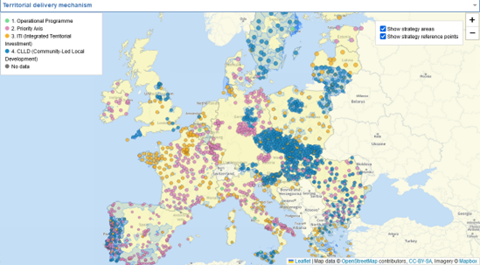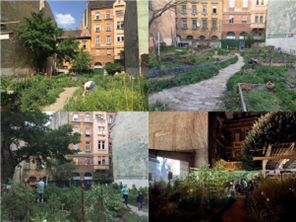The new European Structural Investment Funds (2021-2027) steer European investments toward collaborative cities
Edited on
16 September 2022The European Structural and Investment Funds (ESIF) launched by the European Commission aims at investing in sustainable European economies and job creation, focusing among others on research and innovation, sustainable management of natural resources, and technology.

As a major actor in these fields, cities can receive european funding in building projects following ESIF’ policy objectives.
Recently, ESIF has presented its goals for the new investment period, which started in 2021 and will end in 2027, where communities and local action are enhanced. This shift make collaborative cities an actor of change recognized by European funds.

ESIF strategies implemented across Europe within the Cohesion Policy 2014-2020.
To reach its objectives, ESIF allocates over half of EU funding. It accounts for € 392 billions, channelled through 5 funds composing the ESIF:
- European regional development fund
- European social fund
- Cohesion fund
- European agricultural fund for rural development
- European maritime and fisheries fund
Strategies already supported by the ESIF through its funds for 2014-2020.

The new European investment fund includes objectives which recognise the Co-City collaborative approach. In fact, among the 5 policy objectives (PO), the ESIF claims to support:
PO 4 - “A more social Europe, delivering on the European Pillar of Social Rights and supporting quality employment, education, skills, social inclusion and equal access to healthcare”
PO 5 - “An Europe closer to citizens, by supporting locally-led development strategies and sustainable urban development across the EU”
The 4th PO includes the following specific goals :
- Enhancing the effectiveness of labour markets and access to quality employment through developing social innovation and infrastructure ;
- Improving access to inclusive and quality services in education, training and life-long learning through developing infrastructure ;
- Increasing the socioeconomic integration of marginalised communities, migrants and disadvantaged groups, through integrated measures including housing and social services;
- Ensuring equal access to health care through developing infrastructure, including primary care.
Many urban iniatives already adress these challenges and have been part of the Co-City analysis. For example, Barcelona and its Co-Housing Program or the Procomuns policy for a “Commons Collaborative Economy”.
Besides, the fifth PO includes these specific objectives :
- fostering the integrated social, economic and environmental development, cultural heritage and security in urban areas ;
- fostering the integrated social, economic and environmental local development, cultural heritage and security, including for rural and coastal areas also through community-led local development.
The REGIO Common Output Indicator (RCO) has been built to evaluate this fifth policy objective. It is based on criterias as :
- RCO76 Collaborative projects
- RCO80 Community-led local development strategies for local development
- RCO112 – Stakeholders involved in the preparation and implementation of strategies for integrated territorial development
- RCO114 – Open space created or rehabilitated in urban areas
These features, steering European investment, share a common vision with the Co-City collaborative methodology calling for “integrated territorial development approach, and investments in the form of territorial tools” (https://urbact.eu/co-city), such as community-led local development or integrated territorial investments.
European funds will be directed toward collaborative cities as the RCO76 corresponds to the UIA Co-City vision, based on regeneration projects co-designed by the City and residents. These regenerated spaces counteract social-spatial polarisation, creating public-community partnerships, mutual trust, and cooperation at the neighbourhood level, which recalls the RC0890 “Community-led local development strategies”. Besides, Co-Cities claims for diversified governance tools, as no one size fits all solution. The methodological approach proposes to turn public spaces into engines of neighbourhood revitalisation, political empowerment, and thus integrated territorial development, similarly to the RCO112. Finally, the fifth PO enhances collaborative cities as the RCO114 corresponds to Co-City vision of regeneration of under-utilised public spaces, turned into places able to trigger a process of sustainable development.
An example of a collaborative urban innovation projects which recalls the fifth policy objective and its indicators is the city of Budapest, within the Co4Cities Pilots project. It aims to develop a real estate reuse mechanism in order to make vacant spaces available to local realities and non-governmental organizations. In the long term, the city want to establish a new mechanism with district municipalities for joint community property use in the spirit of the urban commons.

Author of the article Christian Iaione, Ad hoc expert
 Submitted by Laura Socci on
Submitted by Laura Socci on
